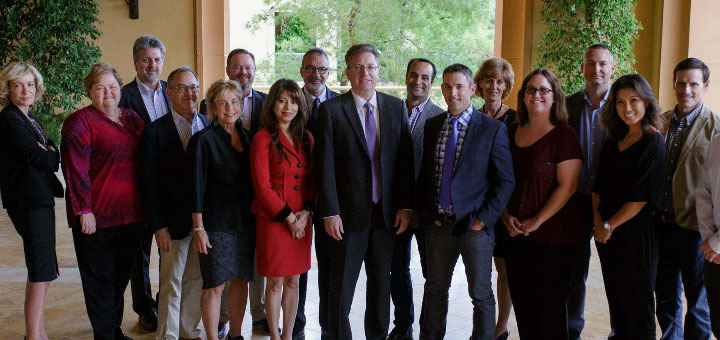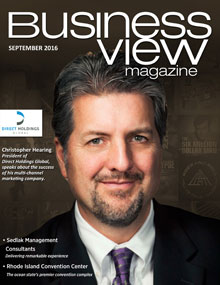Since its formative days, television has been an advertising medium. Indeed, many of America’s earliest TV’s shows were created specifically by sponsors whose main goal was the selling of their products; “soap operas” were created to peddle soap – their ongoing stories were merely vehicles to keep viewers tuning in so that the advertising could “take.” Infomercials came along in the 1970s as program-length combinations of information and a sponsor’s commercial message. They often featured their own celebrity spokespersons and they were designed to solicit a direct response (DR) from a viewer, often claiming that a particular product was “not sold in stores.”
Infomercials proliferated in the United States after 1984, when the Federal Communications Commission eliminated regulations that were established in the 1950s and 1960s to govern the commercial content of television. They were often shown during the late night/early morning hours, when TV broadcast time was least expensive. Today, an infomercial can be seen on TV at any time of the day or night with some television stations devoted entirely to infomercial programming.
In the United States, infomercials are regulated by the Federal Trade Commission (FTC), which has strict rules governing how products may be endorsed and what claims made about them are acceptable. In 1991, several industry principals formed the National Infomercial Marketing Association (NIMA) in order to represent infomercial companies and their servicers, while providing the self-regulation necessary so that the FTC would be less inclined to wield a heavier regulatory hand.
In 1997, NIMA changed its name to the Electronic Retailing Association (ERA) in recognition of the fact that TV’s direct response advertising model was expanding into other media. “It evolved into an industry that encompasses the whole omni-channel: TV, digital, radio, print, direct mail, and email,” says Chris Reinmuth, the Acting President and Executive Director of today’s ERA. “So, we’ve become a fully, direct, omni-channel association; anybody that is doing direct marketing would be a potential member.”
The ERA’s current membership includes 3,800 individuals at more than 450 companies in 45 countries, and encompasses all levels of direct response marketers and suppliers. “We provide a networking platform for service providers ranging from media, to fulfillment, to call centers, to CRMs, to e-commerce platforms, all the way through to our marketers,” Reinmuth says. The Association’s mandate is to represent that global, $350 billion, direct-to-consumer marketplace in several ways.
First, ERA provides unparalleled access to industry leaders and influencers through its annual trade shows, summits, conferences, meetings, and events, where members can network, make personal connections, and conduct business. The ERA also helps its merchant members learn how to sell their products in the omni-channel marketplace. “Who’s the best fulfillment house; who’s the best media company to buy your media through; who’s the best call center to take your calls?” Reinmuth asks, rhetorically. “We have the best service providers within our membership to help service those marketers,” he continues. “We have some of the most cutting edge people in technology. If you have a product and you want to sell it, there is no better association that can help you sell that product through any means necessary – and can also guide you how to do it in the most ethical manner.”
Another important activity of the Association is advocacy. ERA works on behalf of its members by making sure that key lawmakers in Congress and regulatory leaders at the FTC in Washington are provided with the proper information from industry professionals – guaranteeing that their voices are being heard and heeded on Capitol Hill. “We have our own advocacy group within our Association and that is what a big piece of membership dues goes to,” says Reinmuth. “We have a government affairs fly-in every year in D.C., where we have the Federal Trade Commission come out and speak to our members and talk about legislation.”
Reinmuth says that while direct marketing via TV is still one of ERA’s major areas of concern, it’s only one of the marketing methodologies in which the Association specializes. “We are definitely moving into digital,” he states. As part of its attempt to reach out to those direct marketers who only market via digital channels, ERA has recently instituted what Reinmuth calls the Digital Road Show Series.
“The Digital Road Show Series is our focus to bring our intellectual property to the digital crowd and apply it to what they’re doing,” he says. The first Digital Road Show took place in Austin, recently, and had four sponsors – one was a large coaching and seminar company; one was a media buyer; one was one of ERA’s founding legal firms; and one was a payment processor. “We’re going to do four of them a year around the country, anywhere where there’s a hotbed for digital. And that’s going to be a big focus where we take the Association.”
As a non-profit association, ERA is governed by a Board of Directors, and run by a staff of ten who manage all advocacy, membership, sales, and marketing efforts. As the Association continues to be the eyes, ears, and voice of the direct response industry, Reinmuth says that he would like to see ERA become “the one focal point where people can come for omni-channel marketing; the one repository for anybody that is looking to sell their products online, through TV, through the mail, or any kind of medium – and get advocacy, as well. We want to be the place where people can go for all of that.”
Check out this handpicked feature on The Direct Retailing Association – Representing face-to-face retailers.
AT A GLANCE
WHO: Electronic Retailing Association
WHAT: A trade association representing the direct response industry.
WHERE: : Washington, DC
WEBSITE: www.retailing.org
DIG DIGITAL?

